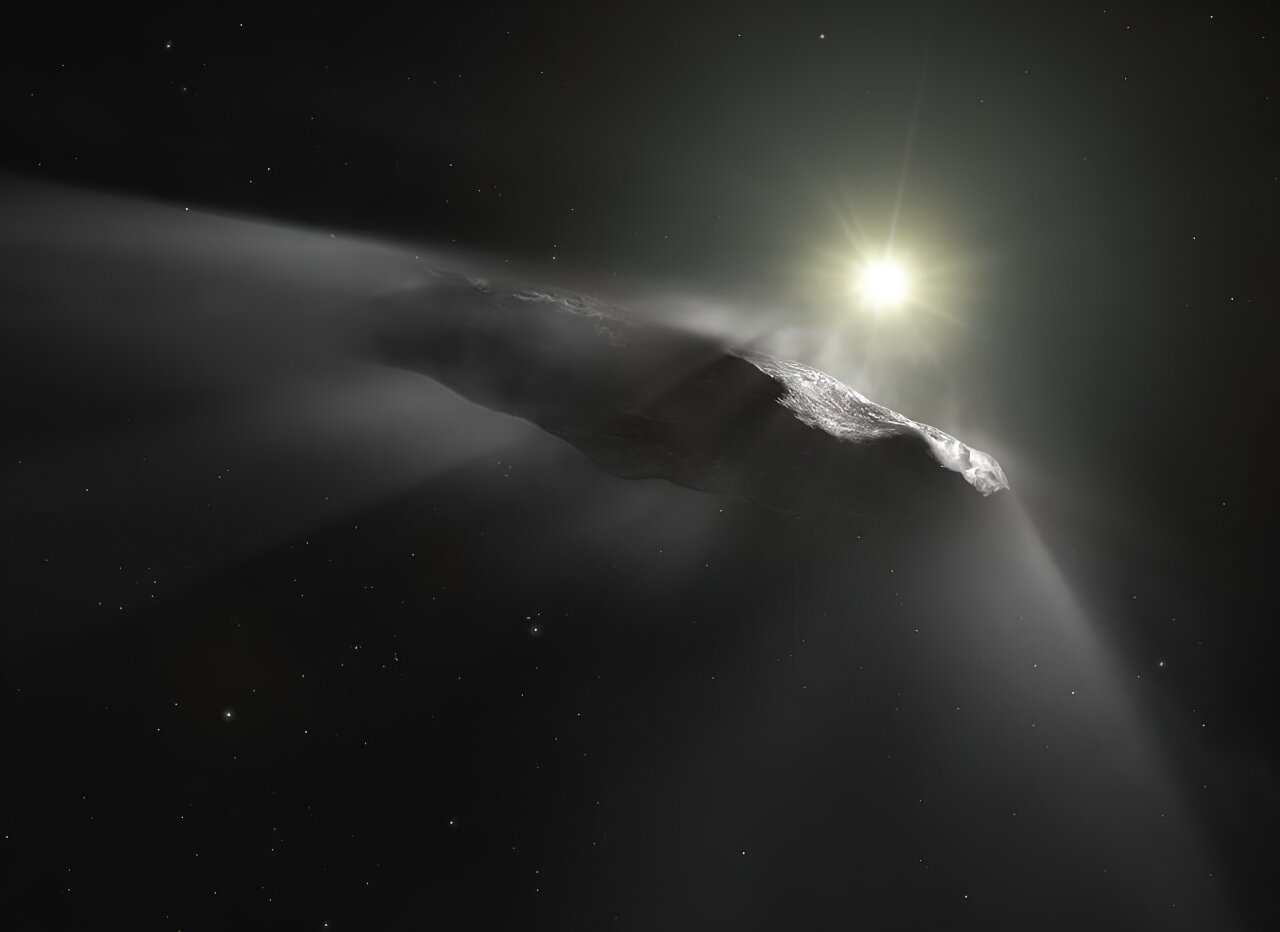From time to time, objects from interstellar space such as the asteroid Oumuamua and comet Borisov fly into the Solar System. Scientists are very interested in looking at them. In a new study, they have established what is needed for this.

Interstellar objects
On October 19, 2017, astronomers discovered object 1I/2017 U1. Subsequently, it was named Oumuamua and turned out to be the first asteroid that was definitely proved to be an interstellar object, i.e. it flew to us from another star system. Thus, scientists discovered comet Borisov, the trajectory of which also left no doubt that this celestial body had come to us from very far away.
Both of these interstellar objects quickly approached the Sun and flew on. They did not interact in any way with the bodies of the Solar System. Moreover, scientists did not even have time to see them properly. Therefore, they are now waiting for new guests, who may contain a lot of important information.
These comets and asteroids formed near other luminaries, so we can learn a lot from their chemical composition about what conditions prevail there. In addition, they bear the imprint of thousands of years of travel through interstellar space.
Interceptor of interstellar objects
However, in order to properly see interstellar objects, it is necessary to fly up close to them, sit down and return samples to Earth. And it is extremely difficult to do this because of the extremely high speed that they have at the moment of approaching the Sun. We need a high-speed probe similar to the ESA’s Comet Interceptor.
A new article, authored by scientists from the Southwestern Research Institute of the United States, suggests focusing on the Interstellar Object Explorer (IOE) mission. According to them, it is realistic both financially and technologically.
Scientists have no doubt that there should be a goal for it soon. They calculated that at least 7 interstellar objects pass through our system every year. Some of them are captured by the gravity of our sun, but most fly further. However, we do not see either of them.
In the late 2020s and early 2030s, everything should change. The Vera Rubin Observatory and other powerful telescopes will start operating. It is expected that they will be able to obtain data on millions of asteroids in the Solar System, and among them, from 15 to 70 interstellar objects will be discovered within the first 10 years.
What will the spacecraft look like?
In addition to all of the above, the study describes the main technical requirements that the new mission must meet. The main thing that defines them is the high speed and invisibility of interstellar objects. They will almost certainly not be noticed until they get closer to the Main Belt. This means that people will only have a few weeks or months to intercept them before they disappear forever.
Therefore, there will be no time to prepare a mission after the target is detected. It should already be at the Lagrange point, where you can wait a long time for your time, almost without consuming fuel. However, it still needs to have quite outstanding technical indicators by modern standards.
As scientists have established, the mission should have a speed change of 3.0 km/s. The minimum flight distance over an interstellar object should be 400 km, and it should occur no further than 3 AU from the Sun. The speed of the spacecraft should be 100 km/s.
According to phys.org
Follow us on Twitter to get the most interesting space news in time
https://twitter.comne/ust_magazine


